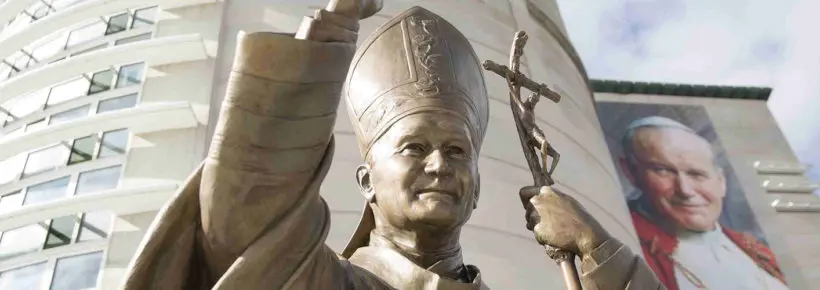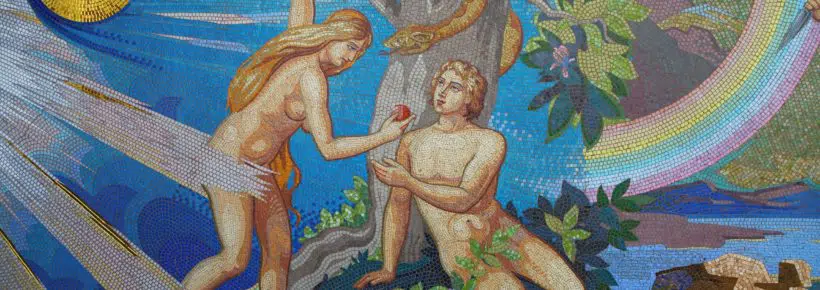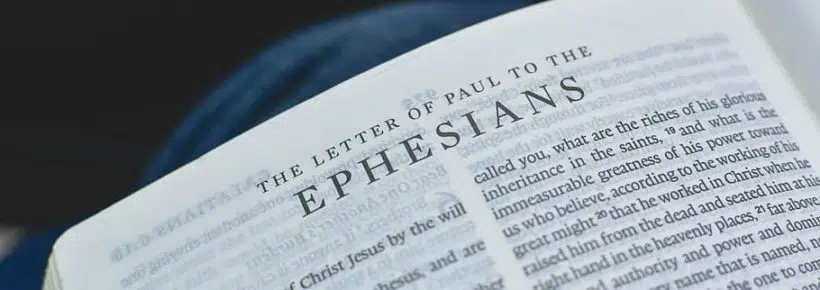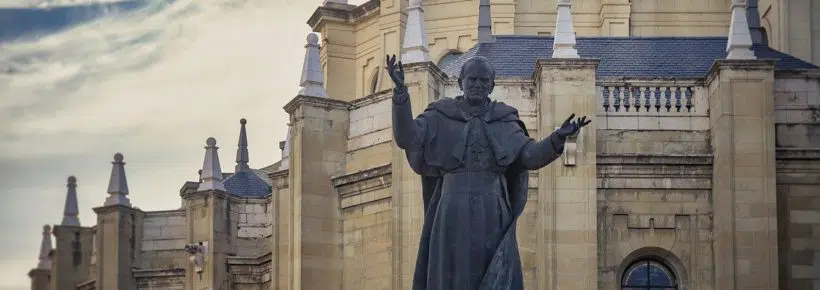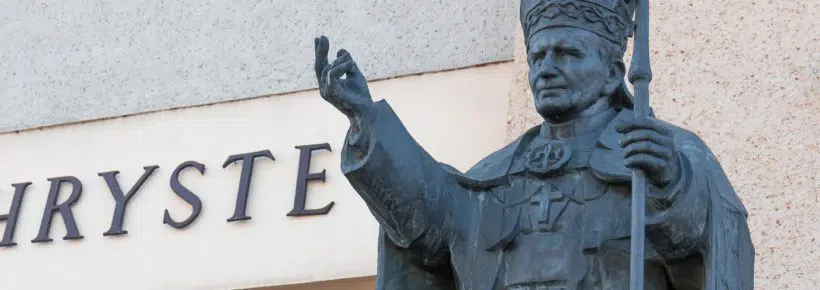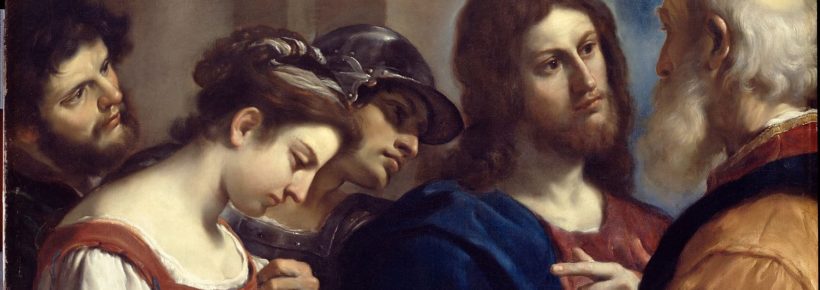In this article we are going to approach the topic of the important role the body plays in our spiritual life. To accomplish this goal, we will treat the following topics:
- The sacramental life as a foundation for the role of the body in the life of prayer
- The liturgy of the Church as a foundation for the role of the body in the life of prayer
- That the spiritual life consists in bringing body and soul together under the action of the Holy Spirit
- Answers to some objections
1. Sacraments and the Role of the Body
How are the sacraments related to the role of the body in the life of prayer?
The spiritual life, or more concretely, the life of prayer, is not one of the main topics of the theology of the body (TOB) of St. John Paul II. However, there are two main concepts in the TOB that form a solid basis for the important role of the body in the prayer life.
The first and most important of these concepts is elucidated by the Pope himself when he teaches, “The body, in fact, and only the body, is capable of making visible what is invisible: the spiritual and the divine. It has been created to transfer into the visible reality of the world the mystery hidden from eternity in God, and thus to be a sign of it” (Catechesis 9, par. 4).
What St. John Paul II is trying to tell us here is that the human body has a sacramental dimension.
The Holy Father is drawing this implication from the official definition of the Church of what sacraments are. In the Catechism of the Catholic Church, the Church teaches us:
The sacraments are efficacious signs of grace, instituted by Christ and entrusted to the Church, by which divine life [grace] is dispensed to us. The visible rites by which the sacraments are celebrated signify and make present the graces proper to each sacrament. They bear fruit in those who receive them with the required dispositions (1131, emphasis added).
The word “efficacious” is a key term in this definition. Its meaning is given in the second sentence of the definition which we have highlighted in bold: the sacraments signify and make present the grace of God. Therefore, the signs used in the sacraments are not mere symbols of grace; through them God dispenses His grace to us. In other words, they efficaciously communicate what they signify.
For example, in the Sacrament of Baptism, the water poured on the new Catholic together with the words the priest pronounces, “I baptize you in the name of the Father, and of the Son and of the Holy Spirit,” actually make present sanctifying grace to the new member of the Body of Christ and at the same time cleanse her of original sin, and also of personal sins in the case of an adult.
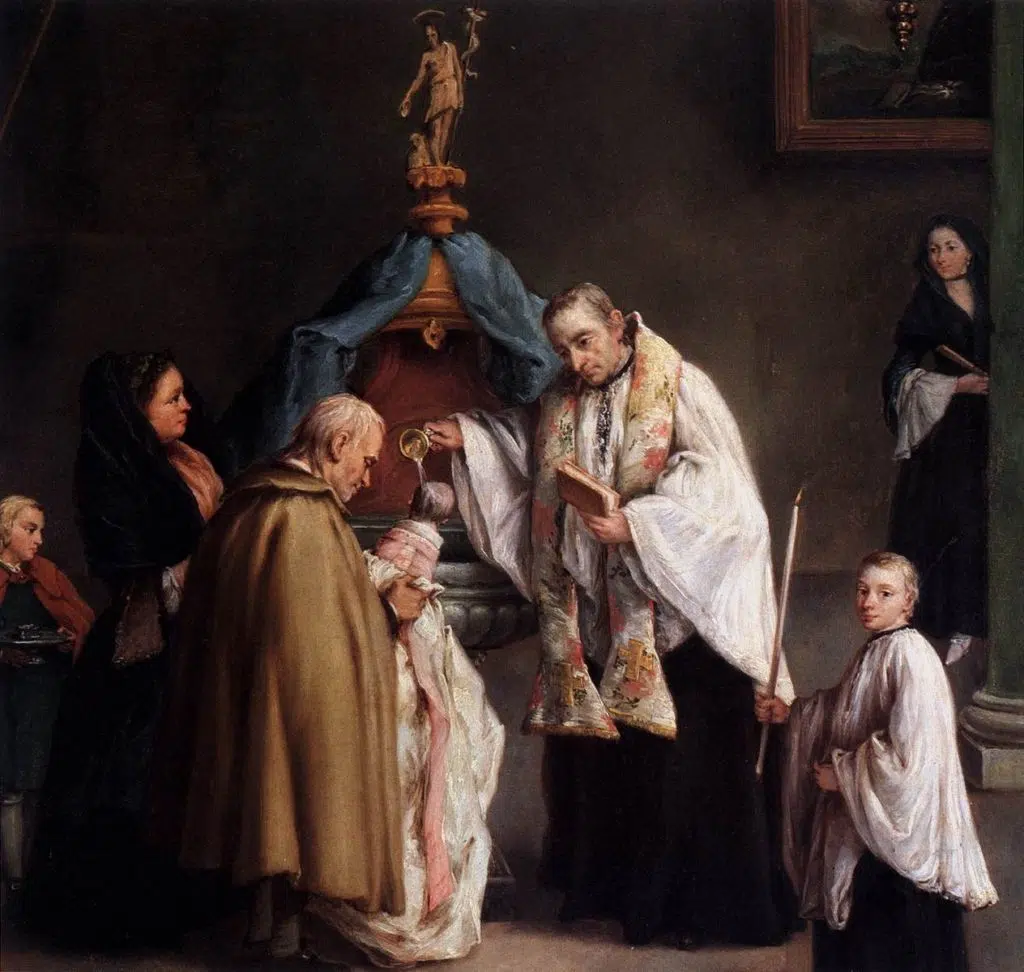
The Baptism by Pietro Longhi
The Sacrament of the Eucharist is so sublime and important that the signs, bread and wine, are no longer bread and wine in their substances or essences. Rather, their substances are transformed, transubstantiated (changed in substance) into the body and blood of Christ through the words of consecration the priests pronounces. The external accidents of the species of bread and wine remain: color, size, shape, and so on, but their substances – what they are – change into the substance of Christ. This is the only sacrament in which Jesus is substantially present: body, blood, soul, and divinity.
This definition of the sacraments also says that Christ instituted the sacraments. He did so in words, as for example, when he commanded his Apostles to go and transmit his teachings and baptize all peoples “in the name of the Father and of the Son and of the Holy Spirit” (Matthew 28:19-20).
But the actual power to transmit grace came first and foremost from the body of Christ hanging on the Cross. According to the Fathers of the Church, from the wounded side of Christ flowed water and blood, symbolizing the two most important sacraments: Baptism and the Eucharist. Baptism is the door to the rest of the sacraments. The Eucharist is our sustenance in our way to Heaven.
The Church Fathers also thought of Jesus dead on the Cross as the new Adam “asleep” on the new tree of life. From the side of the New Adam came forth the Church, the Bride of Christ.
Indeed, since the Word of God “became flesh and dwelt among us” (John 1:14), the body of Christ has become the most palpable way in which God has revealed Himself to us. The body of Christ fulfills completely and perfectly what St. John Paul II said about the human body being a sign of the invisible Love of God (see above). The body of Christ is the sacrament that fully makes present to us God the Father, as well as the Holy Spirit and Himself.
It is easy to see then why the bodies of those who have committed themselves to Christ through the Sacrament of Baptism and the rest of the sacraments are also, by the grace of God, able to be signs of Christ’s presence in the world.
Moreover, when Catholics assemble to celebrate the Mass and other sacraments (such as Baptism and Confirmation), their physical presence with their shepherds becomes a powerful sign of the physical and spiritual presence of the Church and of Jesus within the Catholic community, but also, by extension, in the midst of the world.
2. The Liturgy and the Role of the Body
How is the liturgy related to the role of the body in the life of prayer?
This sacramental understanding of Christ, His Body the Church, and every member of the Church prompted the Holy Father to speak about the virtuous lives of Catholics through their bodily expressions as liturgy. The liturgy refers to the actions (for example, signs of the Cross) and symbols (water, oil, candles) that the Church uses to express the sacraments.
Moreover, the liturgical actions of the Church express the salvific actions of God through the history of salvation and continue such actions and this history. By extension, the Church also teaches that married and family life are also ways in which the liturgy and the saving plan of God continue to be lived out within the Church and the world. Whenever the family gathers to share their meals; whenever the parents correctly instruct their children in morals, including chastity and modest dress and speech; whenever family members perform humble tasks of attending to their sick and elderly, or even cleaning the house and the dishes; whenever husbands and wives chastely unite themselves in the conjugal act; they constitute liturgy, they continue to live God’s plan of salvation in history expressed through physical signs – in this case, the bodies and actions of family members.
The Holy Father teaches us about this liturgical dimension in the bodily lives of married couples and their families in cycle 5 of his catechesis. This cycle is entirely devoted to the Sacrament of Marriage. The term “liturgy” is used 12 times, especially when he says that the language of the liturgy becomes the language of the body (Catechesis 113). This means that even though all the virtuous bodily actions of the spouses, including their conjugal acts, are ultimately spiritual acts, those bodily actions express the spiritual life and are thus part of the salvific activity of God in history; they are liturgical acts.
These two concepts about the meaning of the body in reference to the sacramental and liturgical life of the Church make up the foundation of the important role of the body in the life of prayer. It is easy to see how the body plays an important role in such a life. Signing ourselves with the sign of the cross, kneeling in prayer, singing hymns of praise to God, opening our arms to pray the Our Father, extending a sign of peace to our fellow Catholics in the Mass, and even quietly remaining seated to meditate or to contemplate divine truths, are all spiritual acts of prayer in which the body united to the soul expresses physically what the spirit is doing in order to unite our whole beings to God.
Of course, the bodily acts of spouses at Mass and in their daily lives are not exclusive to them. All members of the People of God, married or celibate, perform bodily actions that become liturgy.
But these liturgical bodily actions derive their existence from the Church’s celebration of the sacraments, especially the Eucharist. In the Eucharist the priest performs many symbolic bodily actions. These symbolic actions, which are sacramental and liturgical, reach their apex in the words and acts of consecration. The bread and the wine cease to be symbols and become the body and blood of Christ.
It is important to note that the priest separately consecrates the bread into the body of Christ and the wine into his precious blood. These separation of the consecrations is a symbolic bodily action that signifies that Christ really died on the Cross for us, that His blood was separated from His body, and that He really shed His blood and gave up His body for us.
3. The Body’s Importance in the Spiritual Life
But doesn’t the spiritual life consist in avoiding the material in order to be more spiritual?
The spiritual life of the Christian does not consist in disdaining the material (the body) and saving the spiritual (the soul). That concept is dangerously erroneous from a doctrinal perspective. It is dangerously close to the heretical concept of Plato (IV century BC) and the Manicheans (II century AD), who considered what is material to be evil in itself and the spiritual to be good.
It is true that Christ Himself and the saints practiced physical self-denial through fasting and vigil. But they did so not out of disdain for the body but simply to subject the body to the soul and the soul to the Holy Spirit, so that both will be glorified in the life to come. They also did so to practice penance in reparation for their sins and the sins of the world, but always united to the sufferings of Christ, from which their penances derived their efficacy. (In the case of Christ, his fasting and penances were performed to give us an example to follow and to do penance for our sins, not His, since he did not commit any.)
Athletes discipline their bodies through tough physical exercises to train themselves for competition. We should also practice some physical discipline to strengthen our wills that we may, under the grace of God, defeat sin, practice virtue, and have a strong prayer life: for example, avoiding gluttony, rising early to pray or go to daily Mass, kneeling during prayers, controlling what we drink, avoiding smoking, avoiding immoral movies and TV programs, dressing and gesturing with modesty, and so on. All of these acts, based on Christ’s meritorious sufferings, are very valuable as reparation for our sins and those of others.
Those of us who live in countries God has blessed with an abundance of everything sometimes pamper ourselves too much, especially regarding food and sweets. We must break those habits that tend to weaken our moral and spiritual strength. We must live orderly and disciplined lives both for own spiritual and bodily health and also that we may be able to share some of our blessings to those less fortunate than ourselves.
To sum up, the spiritual life of the Christian is lived not by escaping the body, but by placing both body and soul under the action of the Holy Spirit. The Christian spiritual life is the reversal of the Platonic or Manichean “spirituality.” It consists in bringing the body ever closer to the soul, so that it can spontaneously adhere to it and so be gently guided by the will and the intellect. In this way our whole beings, body and soul, can come to submit to the loving and firm guidance of the Holy Spirit.
4. Answers to Objections
John 6
Jesus tells his disciples: “It is the Spirit that gives life, the flesh is of no avail” (John 6:63). Doesn’t this teaching convey disdain for the flesh, i.e., the body, and claim that only the Holy Spirit is important?
Jesus’ entire body of teachings forms a coherent whole. Nothing He said or was said about Him can contradict what He said in another instance. For example, John 1:14 says: And the Word became flesh and dwelt among us. Jesus himself is the Son of God taking on human flesh to become man.
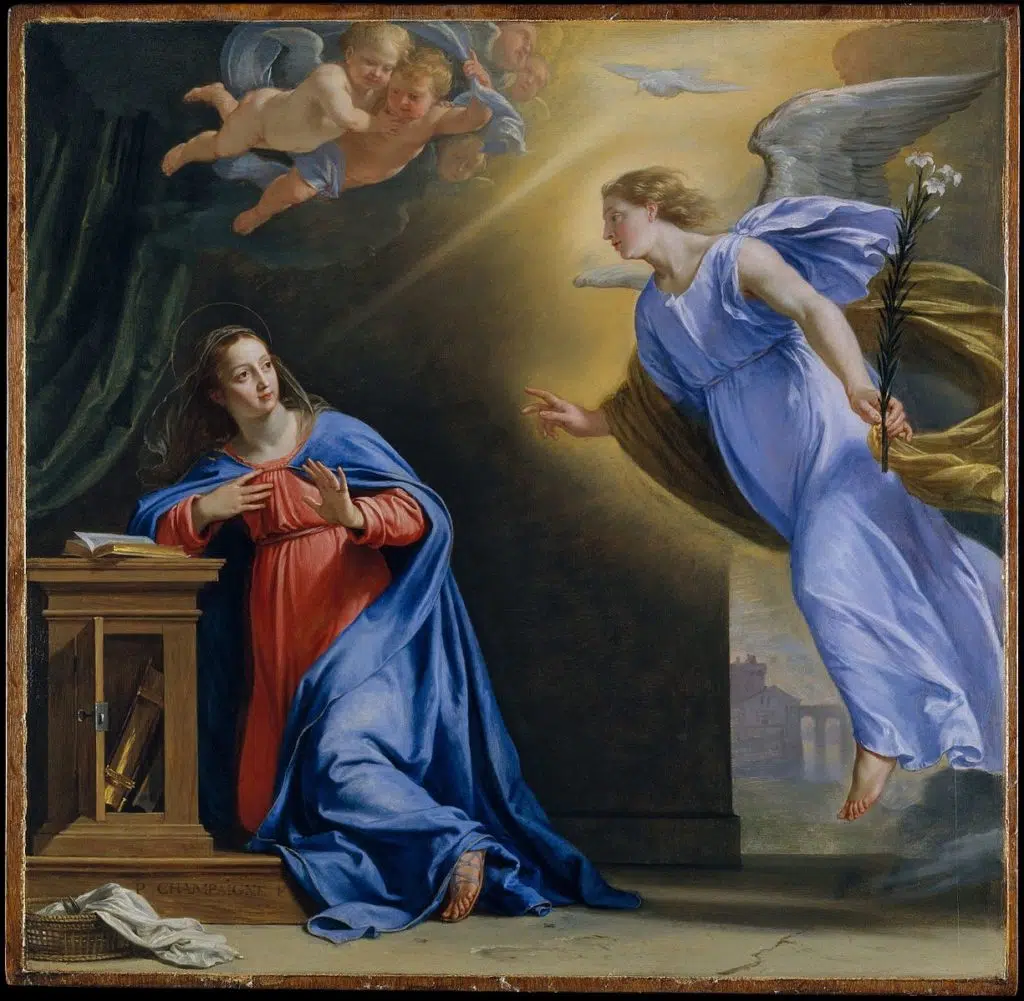
The Annunciation by Philippe de Champaigne
There is no contradiction here because, as Saint Augustine rightly taught about this passage, the flesh without the work of the Holy Spirit is indeed of no avail. But the flesh under the power of the Holy Spirit will be glorified in the final resurrection. In the same chapter 6 of John, Jesus refers to His own flesh as the bread from Heaven: “He who eats My flesh and drinks My blood has eternal life, and I will raise him up at the last day” (verse 54).
Galatians 5
St. Paul says, “The works of the flesh are plain: immorality, impurity, licentiousness, idolatry, sorcery, enmity, strife, jealousy, anger, selfishness, dissension, party spirit, envy, drunkenness, carousing, and the like.” (Gal. 5:19-22). Doesn’t this teaching mean that the flesh, that is to say, the body, is the one which is sinful and the soul is what we must guard against the flesh?
Not at all. If you look carefully at the passage you will see that at least 10 of the sins mentioned in this list (we have bolded them for your convenience) are sins of the soul or spiritual sins, while the others are bodily sins.
St. Paul’s moral teaching was framed in such a way that he contraposed the flesh against the Holy Spirit. But it was clear in his mind that in these particular cases the flesh meant the whole person, body and soul acting not under the grace of God, but against it. But when the whole person, body and soul, acts under the Holy Spirit, he calls that life “living in the Spirit” (see Gal. 5:25).
Otherwise, the following teaching from Saint Paul himself would make no sense: I appeal to you therefore, brethren, by the mercies of God, to present your bodies as a living sacrifice, holy and acceptable to God, which is your spiritual worship (Rom. 12:1, emphasis added). And just to be completely clear, when Saint Paul says, “as a living sacrifice,” the word “sacrifice” here means “offering.” Saint Paul was exhorting the Roman Christians to offer their bodies and their whole being as a prayer offering pleasing to God. That, by the way, is the attitude we should all have, especially during the Mass. Saint Paul is reaffirming what we said above, namely, that our bodies themselves have the capacity to express prayers pleasing to God.
Finally, that St. Paul did not have any disdain for the body is clearly seen in the following passage: For no man ever hates his own flesh but nourishes and cherishes it (Eph. 5:29).
St. Paul follows Jesus’ teaching about the resurrection of the body when he teaches: “We ourselves, who have the first fruits of the Spirit, groan inwardly as we wait for adoption as sons, the redemption of our bodies” (Romans 8:23, emphasis added). St. Paul, following Jesus’ teachings, taught that Christ came into the world to save not only our souls but also our bodies.
1 Corinthians 15
But when St. Paul speaks of the resurrection of the body he seems to denigrating our earthly bodies. He says, “So it is with the resurrection of the dead. What is sown is perishable, what is raised is imperishable. It is sown in dishonor, it is raised in glory. It is sown in weakness, it is raised in power. It is sown a physical body, it is raised a spiritual body.” (1 Cor. 15:42-44)
Saint Paul is not denigrating our earthly physical bodies at all. He is contraposing the earthly state of our bodies – subject to suffering, sickness and death – to the glorious heavenly state of our immortal bodies. Since we have no direct experience of what a glorious body looks like, St. Paul has to draw a sharp contrast between the two in order to highlight what our celestial bodies would be like.
Saint Paul was a Jew, and as such he employed in his teachings what are called hyperbolic statements to bring his point home. It is not that our earthly bodies are not honorable. Otherwise, elsewhere Saint Paul would not teach us to respect and honor the human body as he in fact does in 1 Thes. 4:3-5: “For this is the will of God, your sanctification: that you abstain from immorality, that each one of you know how to control your own body in holiness and honor, not in the passion of lust like heathens who do not know God” (emphasis added).
Jesus himself sometimes used hyperbolic statements ,and everybody understood what He was saying and thus did not ask what he meant by them. For example, in the Sermon on the Mount, he teaches:
If your right eye causes you to sin, pluck it out and throw it away; it is better that you lose one of your members than that your whole body be thrown into hell. And if your right hand causes you to sin, cut it off and throw it away; it is better that you lose one of your members than your whole body go into hell. (Matt. 5:29-30)
It is evident that nobody in his right mind thought that Jesus was teaching us to pluck our eyes or cut our hands to avoid sin. He was teaching us by means of a very vivid figurative speech that we should avoid those occasions of mortal sin and live instead a life of love and virtue.
Final Thoughts
Our bodies should play an integral role in our prayer life. They should express how and what our souls are praying, both in our daily lives and in the liturgy of the Church, especially in the celebration of the Eucharist.
Related Content
Adolfo is the Director of Education for Hispanic Outreach for Human Life International and of HLI's Hispanic outreach arm Vida Humana Internacional. He has a Masters in Theology from St. Vincent de Paul Regional (Major) Seminary and a License in Moral Theology from the Alphonsian Academy in Rome.
Adolfo has traveled frequently to VHI’s affiliates in Latin America to give talks, training sessions, and media interviews. He has authored and co-authored books, articles, reports, and a pro-life training course for Hispanics in the U.S. Adolfo has also participated in the production of two TV pro-life series in Spanish, which have been aired through EWTN en Español.






